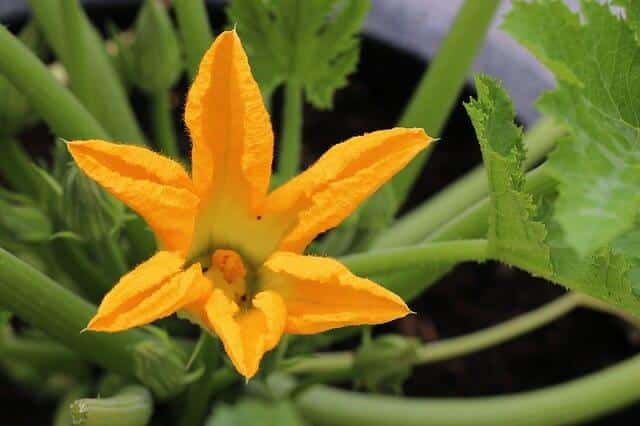Busy homesteaders do not have much time to devote to aesthetics. Those of us devoted to raising our own food and leading an independent way of life usually need to stay focused on practical endeavors — spending the warm seasons growing and preserving vegetables and fruit, milking dairy animals, tending other livestock, and shoring up infrastructure. With all that going on around my place, sometimes it’s all I can do to get the lawn mowed, much less plant and tend ornamental plants.
The cost of ornamentals is a consideration, as well. Purchasing flowers, greenery and shrubs—along with the borders and decorative mulch around them—can add up to real money.
But that does not mean that the curb appeal of homesteads cannot be attractive. Instead of carving time and money out of the food-growing budget for beautifying the front yard, why not choose plants that can do double duty?
Ornamental edibles are the perfect solution. While homestead gardeners always see the beauty in a well-tended plot of corn or a field of potatoes in bloom, some vegetables are so attractive that they can be planted in the front yard and admired by passers-by.
Leafy Greens
Some of the easiest solutions to mixing good looks with good eats are leafy greens. Selections like kale and Swiss chard grow quickly and are super hardy to a wide variety of conditions. They can be planted early in the season and grow into large lush plants, making them an excellent option for garden beds up close to the house where people typically plant vegetation adequate to cover the foundation of the house for an overall manicured appearance.
The All-Natural Fertilizer That Can Double Your Garden Yield!
Swiss chard comes in a variety of bright colors and displays large showy leaves which would rival most ornamentals. Kale, collard greens, and other leafy vegetables grow into large impressive plants, as well, and all are easily planted from inexpensive seed. Another great thing about leafy greens is that they can tolerate—and in many cases prefer—partial shade or limited hours of summer sun, making them the perfect alternative to standard shade-loving plants that are not edible.
Most leafy greens will last all season by continuing to sprout new growth after harvesting, depending upon climate and siting. Even in places where leafy greens cannot survive the heat of high summer, careful succession planting can keep greens growing most of the time.
A Few That Might Surprise You
Other types of vegetable to consider planting for their looks as well as their edibility are those which spill out into a large pleasing shape. Think summer squash, which grows quickly into an enormous plant but does not send spreading runners all over. A big beautiful zucchini planting is the perfect choice for sunny spots to cover a lot of bare ground without getting out of control.
And don’t forget flowers. I know that sounds confusing, because I have been telling you about planting vegetables instead of flowers, but you can have both in the same plant. Remember that most of what we call “vegetables” are technically “fruit,” because they come from the fruiting part of the plant. That means that before peppers and tomatoes and cucumbers and peas become food, they must blossom—and “blossom” is another name for flower, of course.
Some vegetable flowers are more visually appealing than others. One of the most stunning is okra, with its deep yellow hibiscus-related blooms. Many eggplant varieties have lovely blossoms, as do most summer squashes. An added bonus to summer squash blossoms is that they can be eaten while in the flower stage; be sure to choose male blossoms so as to avoid diminishing fruit production—along with other edible flowers such as nasturtiums or daylilies.
Don’t Forget Containers!
Containers can dress up vegetables, too. Window boxes are a good place for shorter vegetables, either alone or mixed in with ornamentals, and aromatic selections such as basil or other herbs add an extra pleasing punch. Gardeners can create attractive locations for vegetables by upcycling reclaimed vessels and materials, building raised beds out of cordwood masonry, and using artistic shapes for beds. The sky is truly the limit here, and just about anything is possible. As an example, I was able to acquire a small homemade canoe from a custom boat maker. It was a failed experiment on his part, but it looks wonderful in my yard. I drilled holes in the bottom for drainage, filled it with soil, and the summer squash I planted in it is flowing gracefully out over the gunwales.
Ornamental edibles need not be just annuals. Consider highbush blueberries with their lovely fall foliage, miniature crabapple trees, hazelnut bushes, grape arbors, borders of high-climbing hops, and even rhubarb beds.
There is no need to divert precious time and money from food production for the sake of curb appeal. Instead, choose dual-purpose plants for practical eating and decorative appeal.
What edibles would you add to our list? Share your thoughts in the section below:
